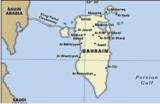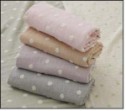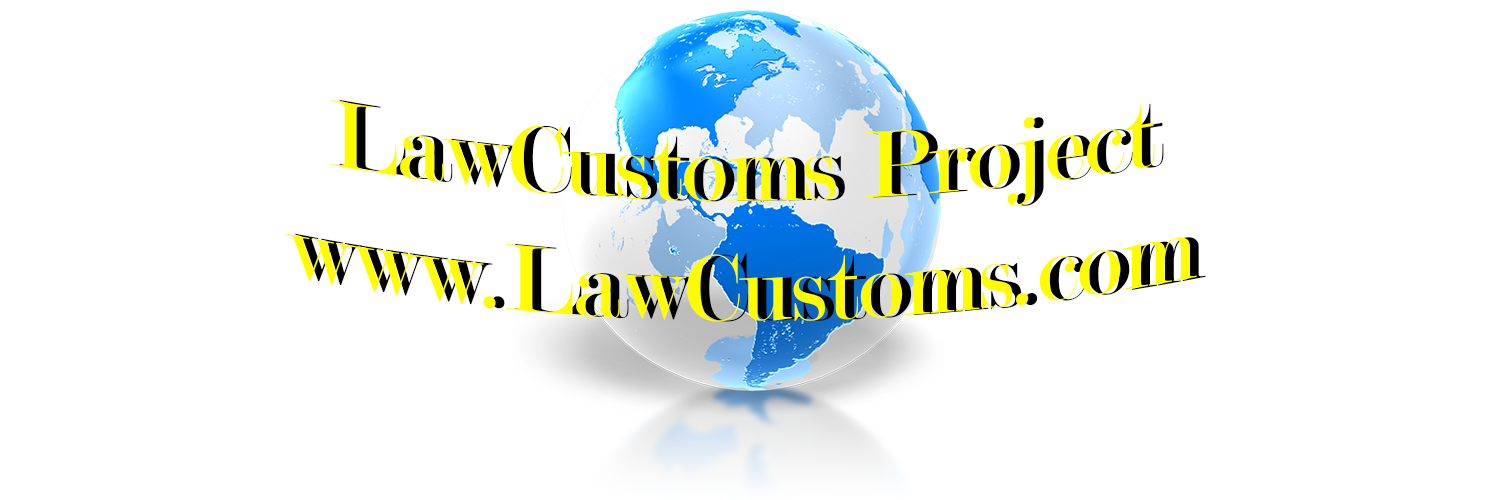 The country of origin concept keeps revisiting members of the international trade community all the time. Some would like to know how to mark their products and packaging. Others are interested in seeing whether they can claim preferential duty treatment. Yet, others need to know if antidumping or countervailing duties apply to their merchandise. The common unifying theme is the interest to deliver a properly marked product to the market while avoiding unnecessary costs (e.g. capitalizing on preferential trade agreements, or avoiding antidumping/countervailing duties). This article attempts to cover legal principles and methodologies one can use for country of origin regulatory compliance.
The country of origin concept keeps revisiting members of the international trade community all the time. Some would like to know how to mark their products and packaging. Others are interested in seeing whether they can claim preferential duty treatment. Yet, others need to know if antidumping or countervailing duties apply to their merchandise. The common unifying theme is the interest to deliver a properly marked product to the market while avoiding unnecessary costs (e.g. capitalizing on preferential trade agreements, or avoiding antidumping/countervailing duties). This article attempts to cover legal principles and methodologies one can use for country of origin regulatory compliance.
Every member of the international trade community should know the answer the following statements for proper country of origin determination:
- Whether the product is for import or export.
- The type of product in question.
- The subsequent intended use of the product.
- The country or countries involved in production. If multiple countries, knowledge of processes that took place in each country.
- How the product is packaged.
IMPORT OR EXPORT?
This is a first step step in analysis. Different sets of rules apply to imports and exports of U.S. made and non-U.S. made products in and out of the United States. For imports, country of origin requirements are dictated primarily by regulations of Customs and Border Protection, and to a lesser degree by Federal Trade Commission (“Made in U.S.A.” marking) and Import Administration (for products subject to antidumping/countervailing duties). For exports, the rules of origin are primarily promulgated by the Census Bureau. After establishing which agencies establish country of origin requirements, one is in better position to open the country of origin regulatory chapter on the appropriate page.
U.S. IMPORTS
Determining Country of Origin: Production Processes & Countries Involved
Background
Before deciding where and how to tag the product “Made in ______,” if to tag it at all, one should know what the country of production for imported product is. Therefore, before anything, an importer of the product should ask whether factors of production to make the imported product involved more than one country. One common practice among many U.S. importers is to shift the burden of country of origin inquiry on their foreign partners (vendors, suppliers, producers, manufacturers). Quite often, the importer would ask a foreign party to fill out a product specification sheet, where one of the line items would invite a foreign party to indicate what the country of origin for the product is. Such invitation implies that the foreign party filling out the form is knowledgeable about U.S. country of origin laws. While many non-U.S. parties are very knowledgeable in laws concerning international trade, such assumption may be misleading. Some foreign parties not only lack knowledge about the U.S. country of origin laws, but also have no information about sources of production that became inputs of their traded goods. The primary interest of many foreign parties is to capitalize on value added profit from manufactured product or an overhead on the resold item(s). Foreign parties are not legally required to know the U.S. country of origin laws. This knowledge is a burden, which works against their profit margin. That is why all to often one will see country of origin being the same as the country of export (when it may not in fact be). U.S. importers, on the other hand, have a legal duty to properly declare imported goods, which includes proper declaration and marking (and consequently the knowledge) of the country of origin rules.
This article, in part, attempts to reconcile the burden shifting which can result in improper country of origin determination. First, the author will introduce the principles guiding the country of origin determination in the United States. Second, the author will suggest an informed approach for addressing the country of origin determination by the U.S. importers and their foreign trading partners.
Determining Country of Origin: Goods Wholly Made In One Country
This is by far the easiest scenario which becomes increasingly rare in light of globalized manufacturing processes. Simply stated, if the product is made 100% in one country, then the country of origin for that product is that country. For example, 100% of all of the inputs (labor, land, capital) originated in China, then the product is “Made in China.” The regulatory basis for this assertion are rooted in 19 C.F.R 134.1(b), which states “‘Country of origin’ means the country of manufacture, production, or growth of any article of foreign origin entering the United States.”
Determining Country of Origin: Goods Made From Inputs of More Than One Country
Products with inputs from more than one country are by far more common scenario reflecting the contemporary production trends. Imagine, for example, a designer in one country and a production floor incorporating that designer ideas in another country. What about genetically modified seeds from country A, used in production of country’s B crops? Even more interesting is the example of metal components made in country A, shaped in country B, assembled in country C pursuant to country D engineering specifications. The unifying theme for all these examples involves inputs from more than one country that are factored in the production processes. If the complexity of the product is high enough, then one can safely assume that a foreign vendor making a sale to a U.S. entity would have no idea where all of the inputs came from. This, in turn, brings back the question of expediency in asking foreign parties the seemingly simple question “What is the Country of Origin?,” and how it should be marked, without further clarification.
The clarification needs to address two points. First point deals with foreign trade treaties, which are also known as “Free Trade Agreements,” for country of origin determination and product specific marking requirements. Second points explores the concept of “substantial transformation.” Author recommends to address the question of Free Trade Agreements and product specific marking requirements before questioning substantial transformation because if any of the Free Trade Agreements or specific markings apply, then the general question of substantial transformation may become irrelevant. These recommendations come from the definition of “country of origin” itself, as it relates to marking, found in 19 C.F.R. 134.1(b), as well as CBP’s U.S. Rules of Origin 2004 Informed Compliance Publication. The publication unambiguously states that “[t]here are two sets of rules of origin schemes for country of origin marking purposes. The first scheme is used to determine the country of origin of a product for all countries except Canada and Mexico … The second scheme is based on Annex 311 to the North American Free Trade Agreement.” Another caveat lurking in the background is the “marking” clause. As we shall see below, determination of country of origin can be geared towards (1) marking and (2) declaration purposes. It is possible to be legally required to mark a product as “Made in Country A,” while declaring to Customs that the product is of country’s B origin in order to take advantage of the preferential trade agreement.
Addressing Exceptions
Free Trade Agreement Exceptions
NAFTA
 Step 1. This applies to products that have inputs from Mexico, Canada, of the United States. Consult NAFTA rules of origin under 19 C.F.R. Subpart L, which will point you to General Note 12, HTSUS. If any of the inputs were produced in Mexico, Canada, United States, or any combinations of these countries, an importer should frame their questions in terms of General Note 12 to the Harmonized Tariff Schedule of the United States. The terms of the Note 12 should assist the importer in determining whether the products qualifies for the NAFTA preferential duty treatment.
Step 1. This applies to products that have inputs from Mexico, Canada, of the United States. Consult NAFTA rules of origin under 19 C.F.R. Subpart L, which will point you to General Note 12, HTSUS. If any of the inputs were produced in Mexico, Canada, United States, or any combinations of these countries, an importer should frame their questions in terms of General Note 12 to the Harmonized Tariff Schedule of the United States. The terms of the Note 12 should assist the importer in determining whether the products qualifies for the NAFTA preferential duty treatment.
 Step 2. If the importer determines that the product does qualify for NAFTA, then the importer should determine how to mark their product (i.e. Made in Mexico, Made in Canada, Made in U.S.A.). Marking rules are outlined under 19 C.F.R. 102.00 – 102.20 and 102.25 for textile and apparel products. The importer’s questions should be framed in line with the rules prescribed.
Step 2. If the importer determines that the product does qualify for NAFTA, then the importer should determine how to mark their product (i.e. Made in Mexico, Made in Canada, Made in U.S.A.). Marking rules are outlined under 19 C.F.R. 102.00 – 102.20 and 102.25 for textile and apparel products. The importer’s questions should be framed in line with the rules prescribed.
United States-Morocco Free Trade Agreement
Step 1. Consult rules of origin under 19 C.F.R. Subpart M. Importers should  frame questions in line with the prescribed rules.
frame questions in line with the prescribed rules.
Step 2. If the importer determines that the product does qualify for United States-Morocco Free Trade Agreement, then the importer should determine how to mark their product. Marking rules are outlined under 19 C.F.R. 102.00 – 102.20, and the importer’s questions should be framed in line with the rules prescribed.
United States-Bahrain Free Trade Agreement
Step 1. Consult rules of origin under 19 C.F.R. Subpart N. Importers should frame questions in line with the prescribed rules.
Step 2. If the importer determines that the product does qualify for United States- Bahrain Free Trade Agreement, then the importer should determine how to mark their product. Marking rules are outlined under 19 C.F.R. 102.00 – 102.20, and the importer’s questions should be framed in line with the rules prescribed.
Other Trade Agreements
Although each situation should be evaluated on case-by-case basis, rules of origin evaluation applicable to each free trade agreement in question is a good starting point. Most of the Free Trade Agreements are outlined in the 19 C.F.R. Part 10. Although some agreements (e.g. South Korea) have not made it into code due to timing.
Unless otherwise provided, completion of origin analysis for FTA declaration purposes, may need to be followed by analysis for marking purposes. This may address the question of substantial transformation discussed below.
Product Specific Exceptions
Textile & Apparel Products
 Marking rules for textile products are addressed under 19 C.F.R. 102.21, unless the textile products originate in Israel (19 C.F.R. 102.22). However, outside of marking, a country of origin analysis may involve a question of substantial transformation.
Marking rules for textile products are addressed under 19 C.F.R. 102.21, unless the textile products originate in Israel (19 C.F.R. 102.22). However, outside of marking, a country of origin analysis may involve a question of substantial transformation.
Watches & Clocks
 Additional Note 4 to Chapter 91, HTSUS provides for special marking requirements. The note provides for marking method and the components that should be marked.
Additional Note 4 to Chapter 91, HTSUS provides for special marking requirements. The note provides for marking method and the components that should be marked.
Other Specific Articles
The list of below articles, according to CBP’s publication “Marking of Country of Origin on U.S. Imports, should be effectuated by die-stamping, cast-in-mold lettering, etching (acid or electrolytic), engraving, or by means of metal plates which bear the prescribed marking and which are securely attached to the article in a conspicuous place by welding, screws, or rivets:
- Knives, forks, steels
- Cleavers, clippers, shears
- Scissors, safety razors, blades for safety razors
- Surgical instruments, dental instruments
- Scientific and laboratory instruments
- Pliers, pincers, nippers and hinged hand-tools for holding and splicing wire
- Vacuum containers and parts of the above articles
The list of below articles, according to CBP’s publication “Marking of Country of Origin on U.S. Imports,” should be effectuated by means of die stamping, cast-in-mold lettering, etching, engraving, or continuous paint stenciling:
- pipes
- pipe fittings
The list of below articles, according to CBP’s publication “Marking of Country of Origin on U.S. Imports,” should be effectuated by means of die stamping, molding, etching, raised lettering or an equally permanent method of marking:
- compressed gas cylinders designed for use in the transport and storage of compressed gases
The list of below articles, according to CBP’s publication “Marking of Country of Origin on U.S. Imports,” should be effectuated by means of die stamping, cast-in-mold lettering, etching, engraving, or an equally permanent method of marking:
- manhole rings or frames, covers, and assemblies thereof
J-List Exceptions
Imported products in the following list are not required to be marked with country or origin. This list is commonly referred as a “J-List Exceptions” and is listed under 19 C.F.R. 134.33. One must keep in mind that rule requires country of origin marking for the outermost container in which the article reaches ultimate consumer.
- Art, works of.
- Articles classified under subheadings 9810.00.15, 9810.00.25, 9810.00.40 and 9810.00.45, Harmonized Tariff Schedule of the United States.
- Articles entered in good faith as antiques and rejected an unauthentic.
- Bagging, waste.
- Bags, jute.
- Bands, steel.
- Beads, unstrung.
- Bearings, ball 5/8-inch or less in diameter.
- Blanks, metal, to be plated.
- Bodies, harvest hat.
- Bolts, nuts, and washers.
- Briarwood in blocks.
- Briquettes, coal or coke.
- Buckles, one-inch or less in greatest dimension.
- Burlap.
- Buttons.
- Cards, playing.
- Cellophane and celluloid in sheets, bands, or strips.
- Chemicals, drugs, medicinal and similar substances, when imported in capsules, pills, tablets, lozenges, or troches.
- Cigars and cigarettes.
- Covers, straw bottle.
- Dies, diamond wire, unmounted.
- Dowels, wood.
- Effects, theatrical.
- Eggs.
- Feathers.
- Firewood.
- Flooring: not further manufactured than planed, tongued and grooved.
- Flowers, artificial, except bunches.
- Flowers, cut.
- Glass, cut to shape and size for use in clocks, hand, pocket, and purse mirrors, and other glass of similar shapes and sizes, not including lenses or watch crystals.
- Glides, furniture, except glides with prongs.
- Hairnets.
- Hides, raw.
- Hooks, fish (except snelled fish hooks).
- Hoops (wood), barrel.
- Laths.
- Leather, except finished.
- Livestock.
- Lumber, sawed.
- Metal bars, except concrete reinforcement bars; billets; blocks; blooms; ingots; pigs; plates; sheets, except galvanized sheets; shafting, slabs, and metal in similar forms.
- Mica not further manufactured than cut or stamped to dimensions, shape or form.
- Monuments.
- Nails, spikes, and staples.
- Natural products, such as vegetables, fruits, nuts, berries, and live or dead animals, fish, and birds, all the foregoing which are in their natural state or not advanced in any manner further than is necessary for their safe transportation.
- Nets, bottle, wire.
- Paper, newsprint.
- Paper, stencil.
- Paper, stock.
- Parchment and vellum.
- Parts for machines imported from some country as parts.
- Pickets (wood).
- Pins, tuning.
- Plants, shrubs and other nursery stock.
- Plugs, tie.
- Poles, bamboo.
- Posts (wood), fence.
- Pulpwood.
- Rags (including wiping rags).
- Rails, joint bars, and tie plates covered by subheadings 7302.10.10 through 7302.90.00, Harmonized Tariff Schedule of the United States.
- Ribbon.
- Rivets.
- Rope, including wire rope; cordage; cords; twines, threads, and yarns.
- Scrap and waste.
- Screws.
- Shims, track.
- Shingles (wood) bundles of—except bundles of red cedar shingles.
- Skins, fur, dressed or dyed.
- Skins, raw fur.
- Sponges.
- Springs, watch.
- Stamps, postage and revenue, and other articles covered in subheadings 9704.00.00 and 4807.00.00, Harmonized Tariff Schedule of the United States.
- Staves (wood), barrel.
- Steel, hoop.
- Sugar, maple.
- Ties (wood), railroad.
- Tiles, not over one inch in greatest dimension.
- Timbers, sawed.
- Tips, penholder.
- Trees, Christmas.
- Weights, analytical and precision, in sets.
- Wicking, candle.
- Wire, except barbed.
Generally, container in which the product reaches the ultimate consumer should indicate country of origin of the article it contains. Sometimes, it must indicate country of origin of container itself. Please consult rules under 19 C.F.R 134.22 – 25 for specific details.
Other Exceptions
19 C.F.R. 134.32 – 35has a list of other marking exceptions. Some are common sense (e.g. crude substances), while others are based on their character, origin, and further scheduled processes. Additional literature one may find helpful includes CBP’s origin publications: Marking of Country of Origin; Rules of Origin; Textiles and Apparel Rules of Origin.
SUBSTANTIAL TRANSFORMATION
 Now, after having gone through an exhaustive list of exceptions one may turn to the question of substantial transformation, which was defined by the Court of Appeals for the Federal Circuit as follows: “A substantial transformation occurs when, as a result of manufacturing process, a new and different article emerges, having a distinct name, character or use, which is different from that originally possessed by the article or material before being subjected to the manufacturing process.” Texas Instruments, Inc. v. United States, 681 F.2d 778, 782 (1982). The court stated that substantial transformation includes extensive manufacturing operations, but do not include mere assembly. Id. at 785. Since Texas Instruments decision, the analysis continues to evolve, and should be evaluated on case by case basis. The concept, however, to this day turns around the question whether the process creates a new article of commerce.
Now, after having gone through an exhaustive list of exceptions one may turn to the question of substantial transformation, which was defined by the Court of Appeals for the Federal Circuit as follows: “A substantial transformation occurs when, as a result of manufacturing process, a new and different article emerges, having a distinct name, character or use, which is different from that originally possessed by the article or material before being subjected to the manufacturing process.” Texas Instruments, Inc. v. United States, 681 F.2d 778, 782 (1982). The court stated that substantial transformation includes extensive manufacturing operations, but do not include mere assembly. Id. at 785. Since Texas Instruments decision, the analysis continues to evolve, and should be evaluated on case by case basis. The concept, however, to this day turns around the question whether the process creates a new article of commerce.
As the CBP’s informed compliance publication states, “all U.S. non-preferential rules of origin schemes employ the ‘substantial transformation’ criterion for goods that consist in whole or in part of materials from more than one country. In the majority of the non-preferential schemes, the substantial transformation criterion is applied on a case-by-case basis, and it is based on a change in name/character/use method.”

